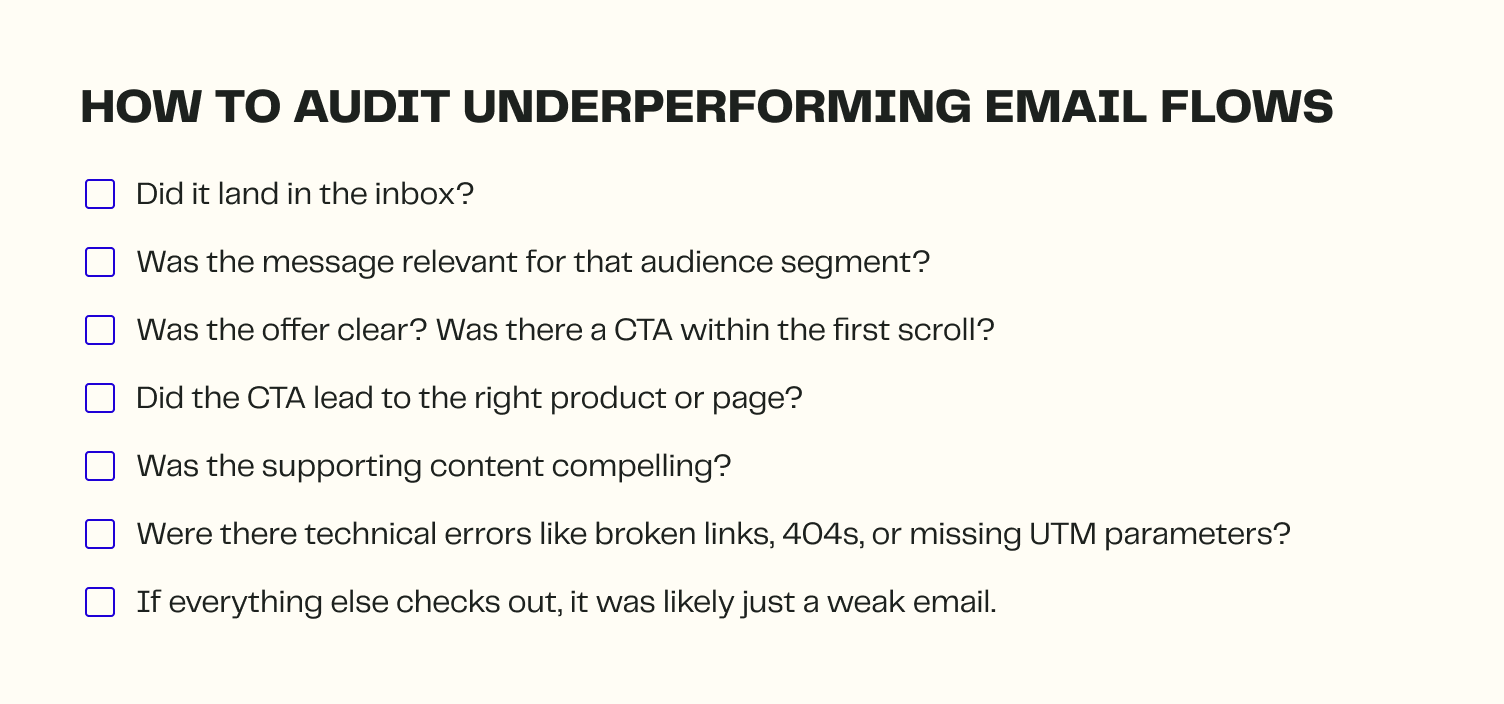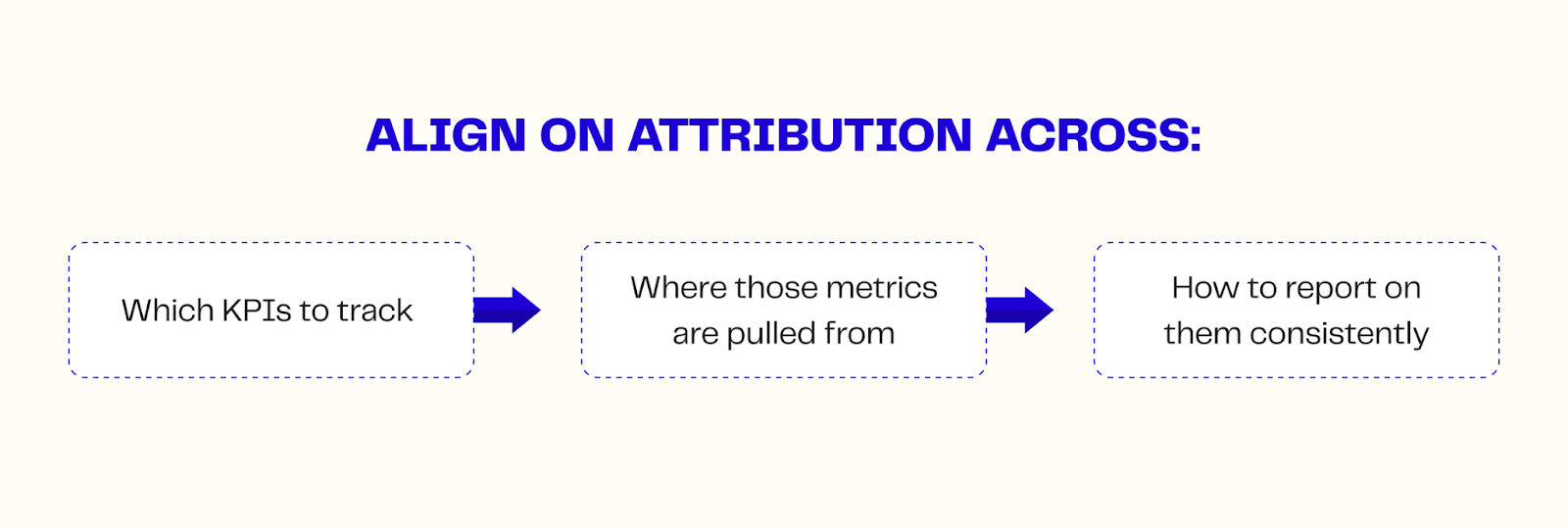The Tactical Retention Audit Framework Used by 8-Figure Brands

DTC brands know they should be doing more with retention. But when they try, they either overcomplicate it with flashy personalization tactics or they underinvest, treating email and SMS like an afterthought.
Feras Khouri has seen both extremes.
As a founder of New Standard, a boutique retention agency serving 8 and 9-figure brands like BYLT and Caraway, he’s helped teams overhaul their retention programs with simple, high-impact audits. We sat down with him to break down exactly how his team evaluates and improves email and SMS performance without chasing trends or bloated strategies.
Why most retention strategies fail from the start
Before jumping into personalization, AI, or layered segmentation, Khouri’s advice is blunt: most brands don’t get the basics right.
“There's this notion that things have to get more complicated,” he says. “But we’ve audited brands doing $600M+ who didn’t even have a popup set up. You’d be surprised.”
According to Khouri, the first retention audit starts with four foundational questions:
- Are you capturing enough leads?
- Are your core flows dialed in?
- Are you tracking performance by audience?
- Are you testing the first 1-2 emails in every flow?
Only once these are in place does Khouri advise leveraging personalization.
Personalization should follow performance, not lead it
“Personalization is one of those industry buzzwords people throw around to sound smart,” Khouri says. “But so many brands don’t even have the data to do it well.”
He’s audited brands that translate emails into 22 languages, only to see 90% of revenue come from 1 or 2 variations. Others add personalization tags without collecting the required data, like first names or gender.
Instead of starting with deep personalization, his team starts with:
- Basket analysis to identify top-performing products per cohort
- Behavioral trends like average days between orders and product paths
- Segment-level testing based on actual purchase behavior, not vanity tags
“You can absolutely get results sending one well-crafted email with smart product selection. Way more than from sending 22 hyper-personalized ones with no lift.”
Retention drives acquisition
DTC brands still treat email and SMS as assets that only activate after the customer converts. Khouri challenges that mindset.
“The welcome flow is actually an acquisition flow. You’re converting subscribers into customers. That first or second email in the flow should be tested forever.”
The same goes for popups. If you’re not capturing the visitor, you’re wasting acquisition spend.
Khouri highlights how platforms like Tie help identify anonymous visitors and stitch together fragmented sessions across devices, so brands can trigger emails like abandon cart and welcome flows more reliably.
“If someone visits your site at work and again at home, you need to know it’s the same person. Otherwise, your entire retention flow breaks.”
How to audit any email or flow that’s underperforming
If one email isn’t converting, Khouri’s team follows this hierarchy to audit:

Fallback explanation: If everything else checks out, it was likely just a weak email.
“It’s like a funnel. You move from top to bottom until you find what’s broken.”
The most important flows to optimize first
Retention strategy can feel overwhelming. That’s why Khouri always starts with flows that are both revenue-generating and frequently triggered:
- Welcome flow: “It’s your best shot at converting new subscribers. Test the offer. Test the timing. Test the top of the email.”
- Abandonment flows: These play a critical role in turning window-shoppers into buyers, especially when reinforced by accurate visitor identity.
- Post-purchase flows: “What do you send someone who’s already purchased? This is where you drive upsells, reviews, loyalty.”
Each of these should be continuously tested, starting with the offer, the CTA above the fold, and the product merchandising.
Common mistakes even $100m+ brands make in their retention strategy
You’d expect the biggest brands to have polished retention playbooks. But Khouri sees the same mistakes repeat, regardless of size:
- No popup, or an underperforming one
- Flows that are overly complex or overly basic
- Poor segmentation (often sending every campaign to the full list)
- No clear retention goals (e.g., CLTV, days between orders, product repeat rate)
“Some brands have built billion-dollar businesses off acquisition. But that doesn’t mean their retention is set up right.”
How top brands approach attribution in retention
Attribution is messy, but Khouri’s approach is simple. According to him, every attribution model is wrong. What matters is agreeing on which one you’ll stick to.
His team never changes the brand’s existing attribution setup in Klaviyo or ESPs. Instead, they align with the brand on 3 factors (and in that order):
- Which KPIs to track (revenue, repeat rate, CLTV)
- Where those metrics are pulled from (platform, data warehouse, custom dashboard)
- How to report on them consistently

Without alignment, Khouri warns that it’s easy for teams to lose trust in the data and each other.
TL;DR: Feras Khouri’s Tactical Retention Audit Framework
- Start with the fundamentals: Are you capturing enough leads? Are your core flows dialed in? Are you tracking performance by audience? Are you testing the first 1–2 emails in every flow?
- Treat flows like landing pages: Focus on the above-the-fold offer, make the CTA clear within the first scroll, ensure clean design, and link to the right product or page.
- Start with data, then personalize: Don’t add personalization tags just to check a box. First, analyze product performance by cohort and track behavioral trends. Once you know what works, layer in personalization that reinforces those proven drivers.
- Audit like a funnel: Start with deliverability, then move down—audience match, above-the-fold content, destination, merchandising, technical errors.
- Retention isn’t just post-purchase: Your popup, welcome flow, and abandonments drive acquisition, too. Popups and early emails must be tested rigorously.
- Align on attribution early: Define which KPIs you track, where they’re pulled from, and how they’re reported. Stick to this one source of truth.
Turn your retention insights into real revenue
Auditing your retention flows is only the first step. To turn insights into growth, you need clean, enriched visitor data that powers better segmentation, stronger campaigns, and smarter automation.
That’s where Tie comes in.
Tie helps ecommerce brands identify anonymous site visitors, enrich customer profiles, and sync that data to your ESP, so every email and SMS is backed by reliable, first-party intelligence.
If you’re investing in retention this quarter, don’t build it on shaky data. Book a demo to see how Tie helps you turn audits into action.





.png)

